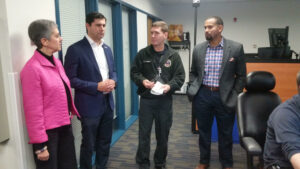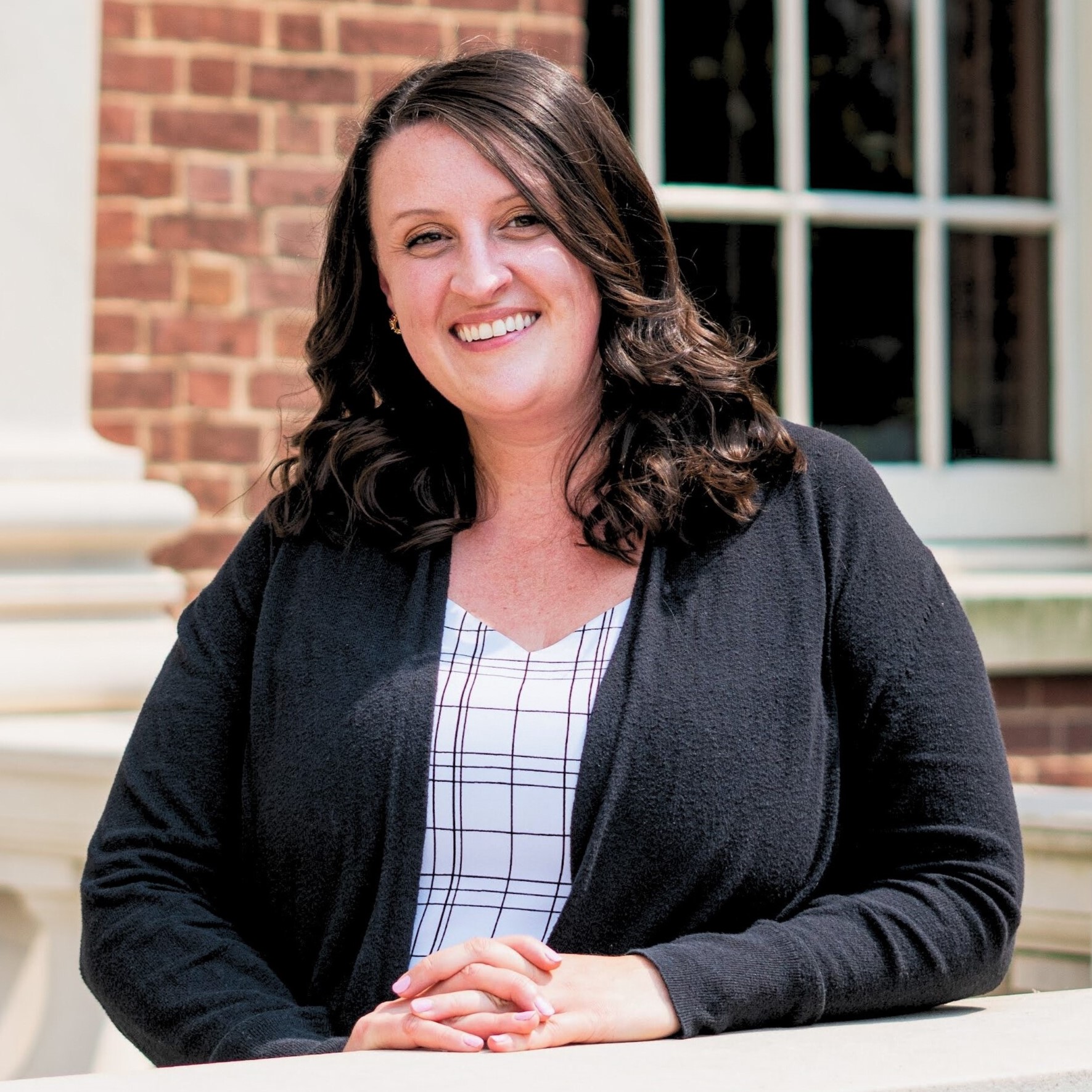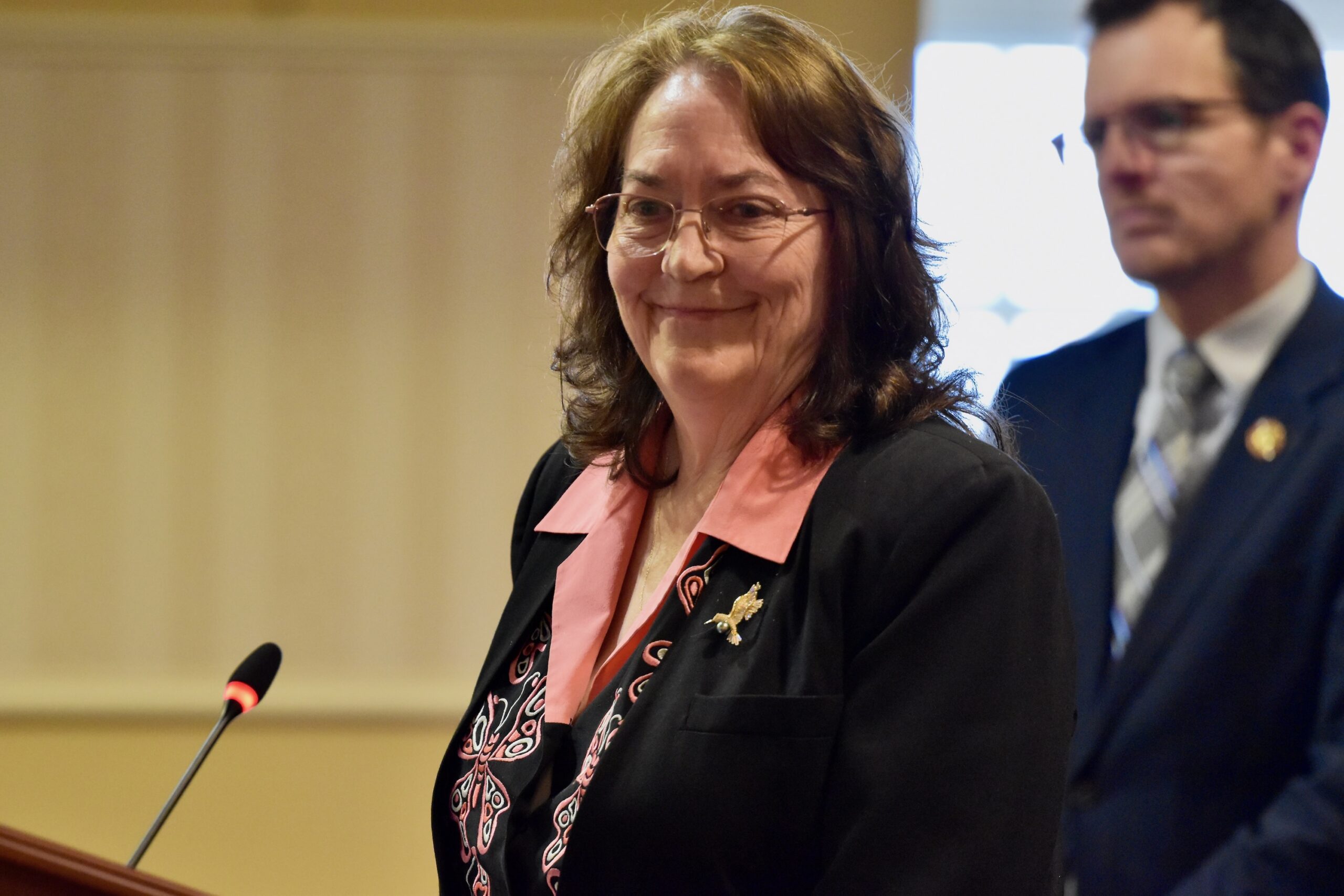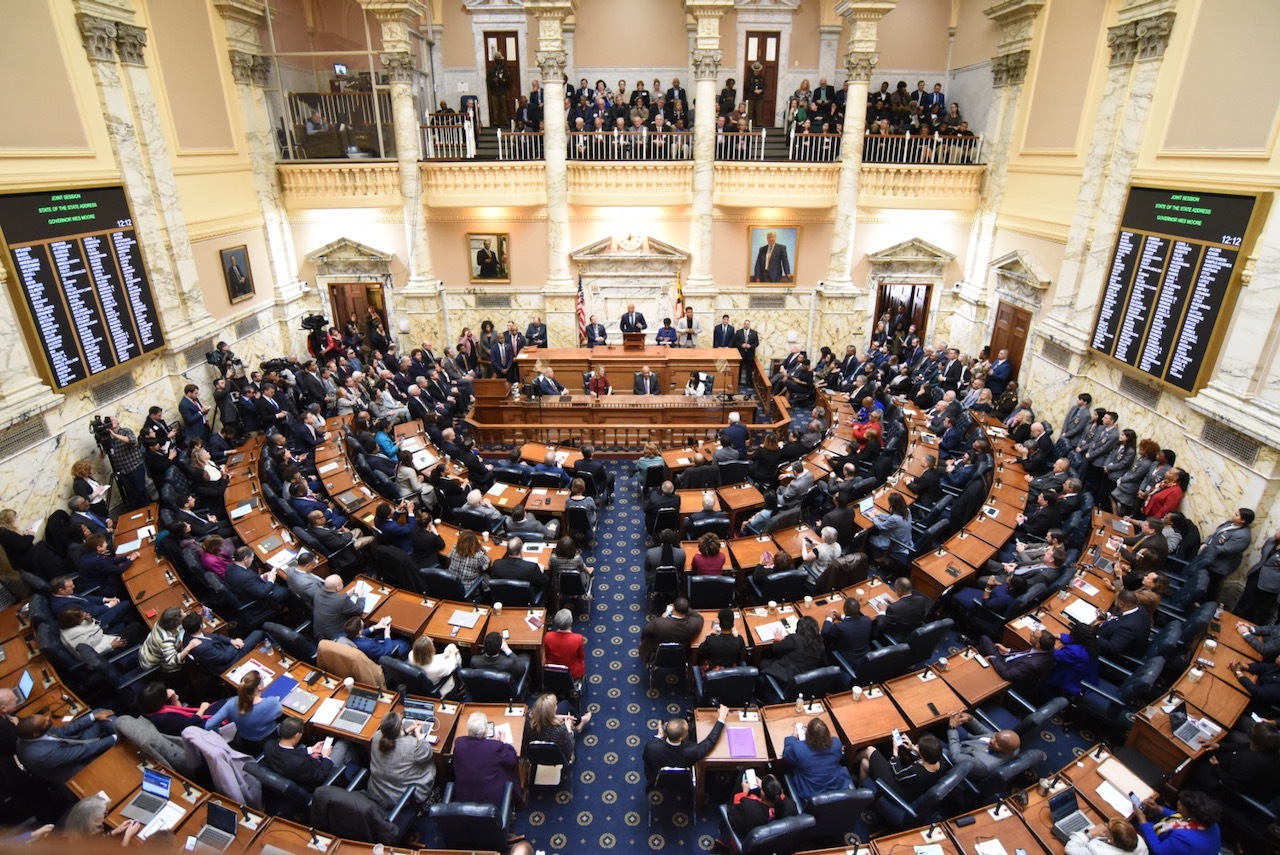Rescuing 911: Commission Puts Forward Next-Gen Recommendations
Just about the only thing that should remain the same is the numbers: 9-1-1.
That’s the conclusion of the Commission to Advance Next-Generation 911 Across Maryland.
The commission recently issued a report to the General Assembly that includes a top-to-bottom revamping of the state’s 9-1-1 call centers to reflect the realities of modern Maryland.
Recommendations range from increased funding to greater recognition for 9-1-1 telecommunicators, who are classified as “clerical” workers but lauded by the commission as the “first of the first responders.”
The commission’s work stems from the basic fact that as technology has advanced, Maryland’s 9-1-1 call centers simply haven’t kept pace. Today’s 24 call centers, managed by the counties in which they’re located and Baltimore City, are based on landline technology, even as about 70 percent of 9-1-1 calls nationwide are made from cell phones.
Next-generation 9-1-1, or NG911, centers will process all call types, including voice, text, vehicle crash notifications, photos and video.
Next-generation 9-1-1 systems can also track callers with much greater accuracy, which could cut down on the number of calls routed with old technology to incorrect jurisdictions.
Maryland shares borders with four states and the District of Columbia. About 20,000 calls are transferred each year between D.C. and Prince George’s County alone.
NG911 systems would allow for seamless rollover of emergency calls from one county to the next during influxes.
Statewide in 2017, 9-1-1 specialists answered 5,354,889 calls ranging from medical and public safety emergencies to other duties that can include non-emergency calls for other county services and reporting state highway and county road issues.
There are about 1,400 9-1-1 specialists in the state now, with a vacancy rate of about 13 percent.
The added pressures of parsing next-generation calls, with potentially graphic photos and videos, was not lost on the commission.
Industry experts believe the calls will become more of a psychological burden on operators and dispatchers when they can see what’s going on, and not just hear descriptions.
“All of this is going to make things more stressful,” said Bill Ferretti, director of Montgomery County’s 911 call center, who was also a member of the commission.
The police operators at the call center in Gaithersburg work at desks with three long vertical computer screens and one horizontal one. Fire Department dispatchers sit in front of eight computer screens.
The commission recommends increased compensation and recognition for 9-1-1 specialists, as well as new statewide minimum training guidelines. Maryland’s current requirements are not as detailed as national best practices. Additionally, 9-1-1 specialists must be certified through the Maryland Institute for Emergency Medical Services Systems to be emergency medical dispatchers, but no statewide certification is required to triage emergency police and fire 9-1-1 calls.
The transition to next-generation 911 is estimated at a minimum of $13 million, though that figure doesn’t include existing expenses for staffing or cover potential new expenses such as increased costs for data storage or staff to handle and review more expansive Public Information Act requests.
Funding the future
In 2018, America celebrated the 50th anniversary of the first 9-1-1 emergency call made in Haleyville, Ala., on Feb. 16, 1968.
In 1979, Maryland became the second state to adopt 9-1-1 as the statewide number for emergency services. The state didn’t begin collecting a fee for the service until 1983 and has only increased the collection twice since, in 1990 and 2003.
The commission noted that the fees don’t cover the needs of the existing 911 systems, much less the increased costs of a next-generation system.
The current fee of $1, collected from Marylanders’ telephone bills, covers only about 39 percent of counties’ costs to operate their 911 centers. In Dorchester County, the fees covered about 10.51 percent of county operating costs; in Baltimore County, fees covered about 66.08 percent. Twenty-five cents of the current fee is collected by the state and managed by the Emergency Number Systems Board; 75 cents goes to the counties that operate local centers.
The commission recommends that state increase its 25-cent share of the fee to 50 cents and authorize counties to increase their 75-cent share up to an additional 75 cents.
Additionally, the commission recommends that the state assess the fee on a per-device basis. According to the Maryland Association of Counties (MACo), Maryland’s fee structure is unlike those levied by every other state in that it assesses one user fee per bill, rather than assessing fees based on a per-line or per-device basis.
That fee structure is “inadequate,” the commission concluded, because it does not account for the possibility that one phone bill may cover five people.
“Each is capable of dialing 9-1-1 and Maryland [emergency call centers] needs to provide staffing to answer all five calls and the network must accommodate all five calls; the funding model of $1.00 per phone bill clearly is not capable of supporting this,” the commission wrote.
According to MACo, 9-1-1 user fees in Maryland covered about 55 percent of the total cost to provide 9-1-1. Surrounding states collected a much higher percentage of their costs from user fees:
- Virginia, 75 percent;
- Delaware, 87 percent;
- Pennsylvania, 93 percent; and
- West Virginia, 113 percent.
Using the assumption that the state portion of the 9-1-1 fee would increase to 50 cents, but the local rates would remain at 75 cents, collecting the fee from every subscriber versus every bill would yield a $145 million increase in revenue, according to the commission’s calculations. Under the new model, more state money would be funneled back to counties, so fees would cover about 84 percent of county costs.

Bill Ferretti (second from right), director of Montgomery County’s 911 call center, explains the operations to (left to right) state Sen. Cheryl Kagan, Montgomery County Councilman Gabriel Albornoz, and County Councilman William Jawando. Photo by Josh Kurtz.
State Sen. Cheryl C. Kagan (D-Montgomery), the chairwoman of the 911 commission, characterized the change as “closing a loophole.”
“It’s only fair that if you have a phone and can call 911, you need to pay the 911 fee,” Kagan said.
Moving forward
The commission unanimously endorsed 23 recommendations in areas including standardizing technical guidelines, increasing cybersecurity plans, creating educational programs to train the next generation of 9-1-1 specialists and establishing statewide performance and accountability metrics including factors like call counts, time to answer, call blockages, abandoned call rates and more.
Kagan will introduce a bill in the General Assembly next year that would codify some of the commission’s recommendations, including the fee adjustment.
Maryland counties are already moving toward next-generation 9-1-1 services. Six counties (Calvert, Charles, Frederick, Montgomery, Prince George’s and St. Mary’s) have contracted to create next-gen systems through a master contract awarded by Fairfax County in Virginia. Five of the six counties are expected to go live with NG911 services by June 30, 2019, while other counties in the state are expected to complete the shift no later than Dec. 31, 2021, according to a timeline set by the Emergency Number Systems Board.
In February 2018, the Board of Public Works approved $2.4 million to implement a statewide text-to-911 system that will be compatible with NG911, but does not support multimedia messages such as photo and video. Frederick County, home to the Maryland School for the Deaf, started a national pilot program for text-to-911 in 2015 and receives an average of 30 texts to 911 each month, according to the Department of Legislative Services.
Kagan said the fact that nearly two dozen states are ahead of Maryland in implementing next-generation 9-1-1 technologies “is of great concern.”
Throughout the commission’s work, she has repeated the reminder: “When 911 fails, people die.”
Kagan said her dedication to the issue stems from the 2010 death of Carl Henn, a Rockville resident and community activist. Henn had biked to a community picnic in Rockville when he was struck by lightning from a fast-moving storm. When friends tried to call for emergency help, they were met by busy signals for nearly 20 minutes, as the Montgomery County call center was flooded with hundreds of calls for help from storm damage and related emergencies.
Kagan was overcome with emotion during a commission meeting this fall when she read a letter from Henn’s wife, Carol, thanking the committee for its work.
“Even in preschool, children everywhere are taught that when there is a problem, call 9-1-1 and help will come. No matter when, no matter what,” Carol Henn wrote. “When Carl was struck and no one could get a phone line through to 9-1-1, I learned that I had taken for granted what cannot be taken for granted. It’s not magic – it works when folks like you have the resources, support, and systems to make it work. That’s why what you are doing is so important and so appreciated.”
In an interview, Carol Henn said her husband, a three-time Rockville City Council candidate, had a deeply ingrained sense of public service. A next-generation 9-1-1 system with the ability to transfer overflow calls could have connected Henn’s friends to emergency responders more quickly.
“He had to die as the result of this. The people of Maryland deserve better than that,” Carol Henn said.
Josh Kurtz contributed to this report.



 Creative Commons Attribution
Creative Commons Attribution